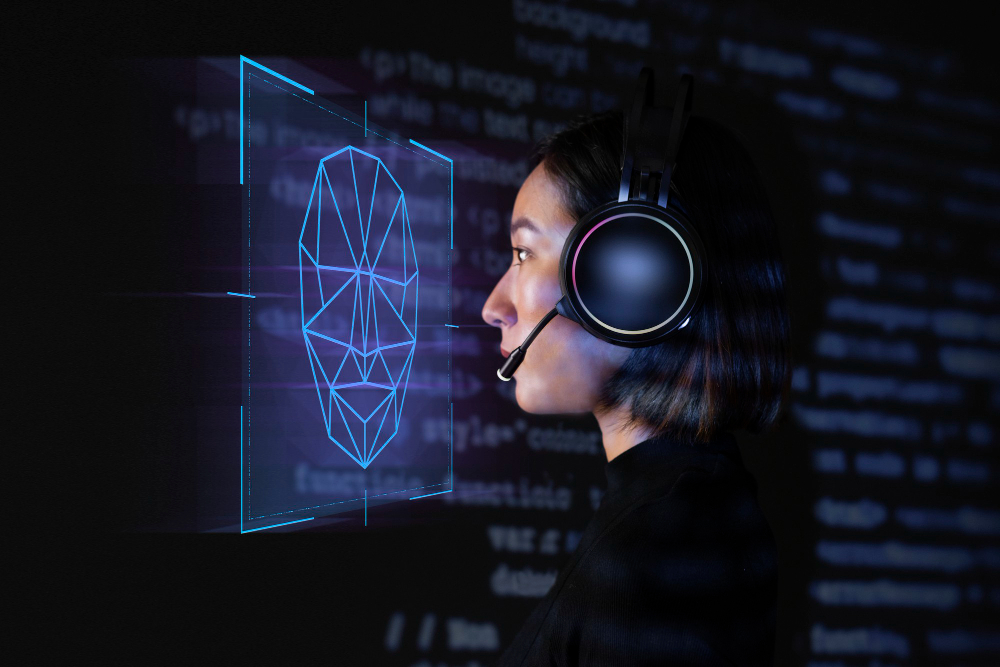Introduction
Overview of Cybersecurity Challenges
The world has moved faster because of digitalization, so have the problems related to cyber security.
Moreover, cyber-attack tools have changed with time and new ways have been discovered.
This may even include ransomware attacks and data breaches, up until some of the more advanced ones, which appropriately coined in the parlance of description, APT penetrated computer systems and stayed stealthy for extended periods.
Some of these pose a risk to national security aside from causing immense damage to the wallets and reputations of their victims.
Indeed, as the devices connecting to the internet increased, then obviously, so did their attack surface, and there may be numerous simple, thinking of more possibilities being given by the not-so-nice guys.

Role of AI in Cybersecurity
Definition of AI in the context of cybersecurity Importance of real-time threat detection for cyber and incident management, response and prevention
Quickly emerging from its strength, artificial intelligence driven abilities have lately rushed to power modern cyber defense in hopes of developing the ability of real-time pattern recognition in a limited span of anomalies and easiness of handling data volumes in bulks.
Purpose of the Article: Exploring AI’s Impact on Cybersecurity
The AI application in cyber defense comprises, for instance, ML or NLP or even automation to identify and respond to cyber threats with predictive measures. Malicious threat actors sophisticated attacks' patterns can be seen and observed by keeping an eye on network traffic.
These technologies, case studies, and challenges may present an approximate idea of what AI-driven cybersecurity can achieve toward improving the readiness and capacity of the organization to continually offer ongoing security against the dynamic threat environments.
It describes the paradigm shift brought about by AI in relation to aspects of endpoint security and the security orchestration because of the timely incident detection and prevention at the edge of the security framework.
Understanding AI in Cybersecurity
Hence, it is machine learning and deep learning that are the basic AI technologies in cybersecurity.
In using a machine, learning through experience enhances the systems' ability to detect relevant data bit by bit. Instead of such rule-based detection, it is deep learning that lets AI understand complex patterns.
One can analyze large sums of language-based data using NLP or natural language processing in the form of e-mails, security reports, and even posts using social media. Social media would let someone understand from the persons post via social media if he falls into an early phishing attack or a form of early social engineering.
Language Identification Therefore, using natural language processing, the AI may find whether it finds the individual suspicious or not.

Cybersecurity Categories of AI Applications
• Anomaly Detection: The AI model could detect unusual user behavior or malicious traffic patterns that may be reviewed by security teams to establish possible attacks.
• Predictive Analytics: Using historical data, the analytics would use AI models to predict possible cyber attacks ahead of time and give the organization a head start on strengthening its defenses.
• Automated Response Systems: AI automatically responds to some attacks. For instance, it might disconnect the infected computer from the network to prevent spreading the malware.
Real-Time Threat Detection with AI
These models with tendencies towards behavioral analysis and pattern recognition have been incorporated into AI-based threat detection systems that help real-time malicious activity detection.
If the system detects such login patterns during odd times of day or night, unusual data access and network traffic, then it is probably a sign of malicious activity.
For detection and incident response process of threats, the security analysts and teams monitor this kind of activity against attack patterns they have documented.
Most organizations have already incorporated AI in the cyber incident response environment of their security tools of the security breach of cyber attackers of their organizations.

Some of the examples are given below:
1. Banks: Big banks make use of AI anomaly detection to identify suspicious transactions thereby reducing the time taken to identify the detection and losses also.
2. Healthcare Providers: AI systems ensure that private patient data does not reach unwanted access and real-time identification security incidents of possible data breach.
These pictures prove that AI is still at work, improving the speed of detection, threat hunting, and the evolving threat landscape, with threat hunting and acting quickly with additional protection to the massive body of emerging threats.
Preventing Cyber Threats Using AI
Prevention is mainly through AI in the case of cybersecurity. Being ahead of newly exposed risks is much better because it has to do with threat intelligence, whereby the AI tools may be utilized for gathering, analyses, and even distribution of new threats.
The AI tools power vulnerability management. In this sense, it would investigate the weakness of the vulnerability scans the system and even suggest repairs before the hacker finds their way of exploiting it.

Automated Incident Response tool
Automated incident response is one of the highlighted features of AI; therefore, an organization is better equipped to contain security incidents within itself in real-time.
This feature could even use AI in containing impacted devices and letting an organization's security posture teams know remediation procedures, etc. were breached in its systems.
Recently, the businesses have incorporated AI-based systems into their emails to detect and alert the organization regarding phishing scans for patterns transmitted through the email.
Once these messages are sent out, AI flags and segregates them, thereby terminating it from using the clients' accounts and boosting response times.
Continuous learning and Adaptation
In such a case, the AI systems always keep them updated about the latest changes occurring in cyberattacks and therefore about new threats all the time.
Even in such a scenario also, they update their algorithms pertaining to machine learning by learning from new and emerging risks through their system.
This is because feedback loops are the very essence of any system of this type since this serves as an informing factor as to which part of their system needs to be worked upon in order to obtain maximum performance.

Challenges and Limitations of AI in Cybersecurity
Cyber security success for AI will depend entirely on the quality and security data and volume of diverse data sources that it relies upon for training.
The negative aspect of the equation means bad data may also lead to bad predictions or misses on possible threats. In any event, this appears to nullify the very basic requirement for which AI was being developed.
For instance, data quality, log analysis and high standards security data that cybersecurity teams collect running vulnerability scans and other related activities may have a source that gives great insight into threats.
False Positives and False Negatives
Low sensitivity is not detecting threats. High sensitivity means that the threat appears many times that do not really exist.
Low sensitivity means that threats are not being detected, while high sensitivity means more false alarms. An AI system should be calibrated so that false positives are as rare as false negatives to effectively detect threats.
Ethical and Privacy Issues
This means that mishandling of data or access in a manner that it's not legally permitted violates the right to privacy when using AI in cybersecurity due to data processing.
Organizations should then be transparent and clear regarding how data is collected, used, and retained; in this regard, keeping high ethical standards and conveying true protection by the law is vital.
Other two good-setting technologies that would be integrated into the firm security framework of AI technology include blockchain and the Internet of Things.
For instance, through block chain technology, the immunity is given to this technology with its record-keeping and enhancing data integrity. A real-time algorithm capable of a full threat response and detection capability will now be executed at the level of IoT device toward attacking or repelling certain cyber attacks themselves.
Predictions of Cybersecurity in the Future
AI will play a more expansive role in cyber security, and so it will provide even more proactive and efficient modes of defense.
The hybrid AI-human will offer even stronger security solutions derived from the hybrid systems by increasing the more complicated threats identified by the first human threat intelligence analyst because of the AI analysis and its follow-up monitoring routine data.
To capitalize on benefits from AI for organizational purposes, the AI-centric security strategy must fit with an organizational core business.
Integrating the correct stakeholders of departments into the AI design might cause the AI to fit the cybersecurity frameworks built.

Training and Skill Building
The AI concepts security tools and best-use practices would be key to the security team and overall understanding with cybersecurity personnel security staff.
The best use of AI will thus be enabled through efficient security teams that have multidisciplinary re-skilled personnel and are coordinated by know-how in cybersecurity.
In summary, what we think
This will transform the world of cybersecurity using all the potencies in its detection and prevention and made available through machine learning, NLP, and other incident response actions automated tools and systems concerning proactive actions over vulnerabilities for an increase of threat detection rates and incident response automation processes over time.
Yet the newer forms of cyber threats shall take AI as a tool in securing and protecting valuable data as well as other assets within the digital structures with confidence and trust building capabilities.
Through real time analysis learning, an organisation would really prove to be something uncrackable against the cybercriminals in operation.
All these will only be truly savored once organizations start serious efforts towards embracing AI-assisted cybersecurity solutions. In that regard, some investment in AI technology along with training teams on cybersecurity strategy would be handy in building up the much-needed agile, responsive, and resilient defense against all of these cyber threats of the future.